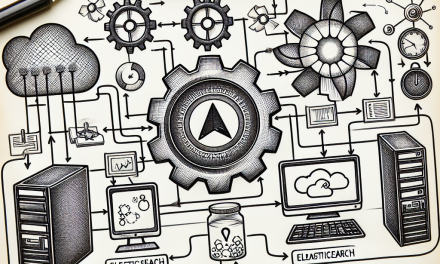Kubernetes has become the go-to platform for managing containerized applications. Its robust architecture provides developers and operations teams with the tools needed to deploy, scale, and manage applications efficiently. However, mastering Kubernetes can be daunting, especially when it comes to understanding the lifecycle of a Kubernetes cluster. In this guide, we’ll walk through the various stages of the Kubernetes cluster lifecycle, providing insights and best practices along the way.
Understanding the Kubernetes Cluster Lifecycle
The Kubernetes cluster lifecycle is divided into distinct phases, each of which comprises unique tasks and considerations. Here’s an overview of the essential stages:
1. Planning and Designing
Before diving into deployment, proper planning is crucial. Considerations during this phase include:
- Use Case Analysis: Understand your application requirements, workloads, and scaling needs.
- Cluster Topology: Decide on the number of masters and nodes, as well as high availability requirements.
- Network Configuration: Evaluate whether to use built-in networking or third-party plug-ins.
2. Cluster Provisioning
Once planning is complete, it’s time to provision the Kubernetes cluster. This phase may include:
- Choosing Deployment Platform: Select between on-premises, cloud-native, or hybrid solutions.
- Automation Tools: Utilize tools like
kubeadm,kops, orRancherfor automated cluster setup. - Configuration Management: Adopt tools like Terraform or Ansible for infrastructure as code to maintain cluster configuration consistency.
3. Cluster Operation
In the operation phase, the focus shifts to maintaining the cluster’s health and ensuring that applications run smoothly. Key aspects include:
- Monitoring: Implement monitoring solutions like Prometheus and Grafana to keep track of cluster performance.
- Logging: Use logging solutions such as ELK stack or Fluentd to collect and analyze logs for debugging.
- Scaling: Manage resources by utilizing Horizontal Pod Autoscaler (HPA) and Cluster Autoscaler to ensure optimal resource use.
4. Application Deployment
With a functional cluster in place, it’s time to deploy applications. Essential practices include:
- Declarative Configuration: Use YAML files for defining Kubernetes resources, leveraging GitOps practices with tools like ArgoCD or FluxCD for version control.
- Continuous Integration/Continuous Deployment (CI/CD): Integrate CI/CD pipelines to streamline deployments and minimize manual interventions.
- Namespace Management: Utilize namespaces to isolate environments (e.g., development, staging, and production).
5. Upgrades and Maintenance
Regular upgrades and maintenance ensure that the cluster remains secure and efficient. Consider the following:
- Version Management: Stay updated with Kubernetes releases. Adopt a predictable upgrade path to maintain compatibility with core components.
- Backup Strategies: Establish policies for regular backups of persistent volumes and cluster configurations.
- Security Practices: Regularly update security patches, use RBAC (Role-Based Access Control), and implement network policies.
6. Troubleshooting and Support
Inevitably, issues may arise. A systematic approach to troubleshooting includes:
- Diagnostic Tools: Utilize built-in commands like
kubectl describeandkubectl logsfor immediate insights into what’s wrong. - Community Support: Leverage forums, documentation, and community slack channels for help.
- Proactive Issue Prevention: Set up alerts based on predefined thresholds for resource utilization or error rates.
7. Decommissioning
Finally, when the cluster is no longer needed, it should be decommissioned effectively:
- Resource Cleanup: Ensure that all resources, including nodes, services, and persistent volumes, are cleaned up to avoid unnecessary costs.
- Documentation: Document lessons learned and review processes for improving future deployments.
Conclusion
Navigating through the Kubernetes cluster lifecycle may seem overwhelming initially, but with structured planning and execution, it can lead to a well-managed and robust container orchestration environment. Understanding each phase’s intricacies empowers practitioners to deploy, maintain, and decommission clusters effectively.
By investing the time to master this lifecycle, organizations can harness the full potential of Kubernetes, ultimately reaping the rewards of streamlined operations, enhanced scalability, and increased innovation.
For more articles related to cloud technologies and Kubernetes, stay tuned to WafaTech Blogs!




